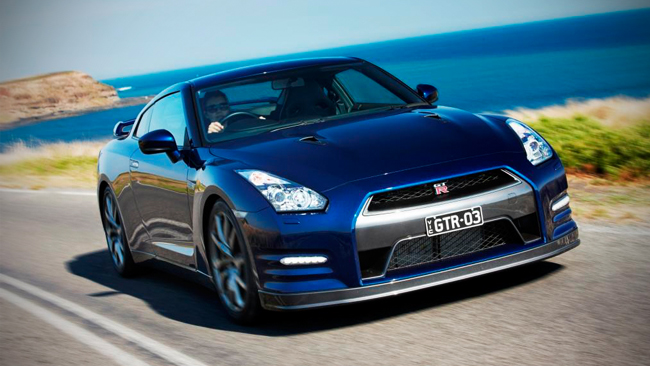IT’S BEEN almost four years since Godzilla returned, stomped on circa-$150K rivals and clawed at 911 Turbo territory. But times have changed, supercars now boast more kilowatts, and Nissan can’t afford to rest on its laurels.For the MY11 GT-R, there’s just one model, which effectively replaces the previous Premium spec that accounted for 90 percent of sales. At $168,800, it’s up $6K on the old flagship.The engineering improvements are designed to make Godzilla not only harder and faster, but cleaner and more liveable.
The 3.8-litre twin-turbo V6 now produces 390kW (up 33kW) and 612Nm (an extra 24Nm), yet a recalibrated engine control module and modified exhaust system improves the ADR fuel figure by 3.5 percent, to 12L/100km. Revised electronics deliver a harder-hitting launch control system, and a remodelled front bar and rear diffuser assist by dropping GT-R’s aero rating by 0.1Cd to 0.26Cd. Stickier (still 20-inch) Dunlops, increased front castor angle and a lower rear roll centre aim to improve stability and cornering; new lightweight aluminium dampers target improved ride quality.Having been criticised for its high servicing costs, the GT-R now employs new measures to ease wear on components and consumables. There’s a new ‘Save’ mode for the six-speed dual-clutcher, designed to ease pressure on the tranny by reducing engine torque; a scavenger pump has been added to maintain turbocharger oil flow during hard driving (oil temp now runs up to eight degrees cooler at max attack); and a two-wheel-drive mode has been adopted, which disconnects drive to the front wheels below 10km/h to aid manoeuvrability.On track at Phillip Island, the nip-tucked Godzilla proves it’s still a towering monster. It certainly feels quicker. You’ll now gasp an even longer ‘aaarr’ between ‘f’ and ‘k’ as the launch control fires at 4000rpm, the AWD and 255mm front/285mm rears hook up to deliver instant traction, and the transmission snaps through the gears. Nissan claims 0-100km/h in 3.0sec flat, down from 3.5. It feels credible.Once up and charging, this revised GT-R at first feels every one of its 1747kg (up 7kg). Chief Engineer Katzutoshi Mizuno reckons GT-R “doesn’t need to be lighter”. Interestingly, however, he doesn’t rate the 100kg-lighter 911 Turbo as a true GT-R competitor either.So yes, the oriental supercar remains a big beast – not nearly as lithe as its Cayman and M3 price-point rivals – but on a fast circuit like PI, it gels. There’s perhaps no bigger test of a car’s stability, brakes and balance than in the condensed seconds between sweeping turn three and slow-hairpin turn four. The Nissan first piles on pace and remains stable. Its mighty Brembos (the six-pot fronts are up 10mm, to 390mm) quickly wipe off speed for the entry. And, on exit, the GT-R playfully kicks its arse out, even with the track-focused VDC-R left on. After seeming so planted on the road, I was surprised to find how nicely you can groove with Godzilla.Beyond the extra powerrr and superb handling, the revised adaptive damping (in Comfort mode, at least) feels moderately more supple, the unaltered steering remains sharp but not loaded with feel, and, thanks to the low-speed rear-drive-only mode, there’s less crabbing when turning round town.Of course, cashed-up purists will always default to a 911 Turbo, but Godzilla has reaffirmed its place as the accessible cut-price alternative. And against the similarly-priced Cayman and M3? Well, when the GT-R is two seconds quicker to the ton, daylight comes second and third.





